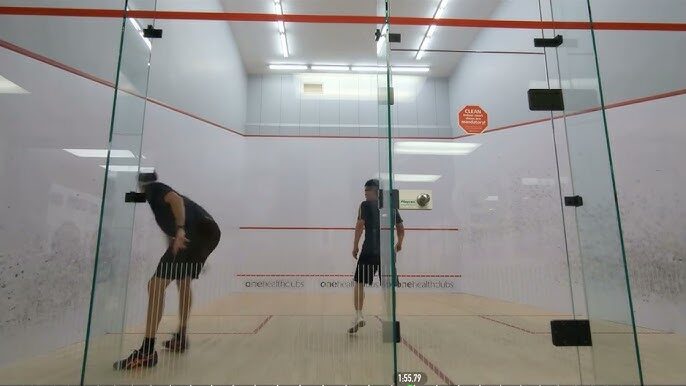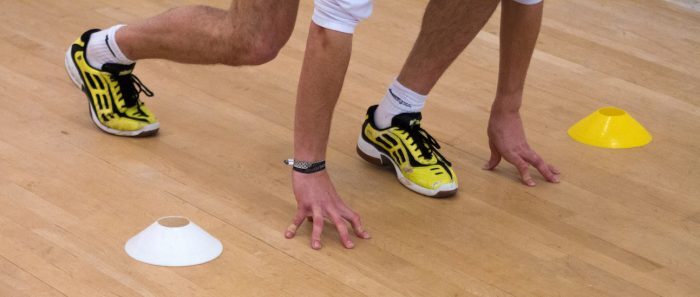Squash is one of the most intense and fast-paced sports in the world, requiring a combination of strength, speed, agility, and endurance. Whether you’re a beginner or an advanced player, improving your squash fitness can significantly enhance your performance on the court. While playing regularly will certainly improve your skills, integrating specific exercises into your routine can help you become faster, stronger, and more agile, reducing the risk of injury and boosting your overall fitness level.
In this blog post, we’ll cover the best exercises to improve squash fitness, including those that enhance your power, stamina, agility, and core strength. Let’s dive into these key exercises and why they are essential for every squash player.
Why Squash Fitness is Unique
Unlike many other sports, squash requires players to move quickly in all directions, often with little time to react. A good squash player must have excellent endurance to handle long rallies, explosive power for quick bursts of speed, and the agility to move seamlessly around the court.
To perform well in squash, you need to develop a fitness routine that targets your core strength, flexibility, agility, and cardiovascular endurance. This is why incorporating squash-specific exercises is vital for improving both your physical fitness and on-court performance.
Best Exercises for Squash Fitness
1. Plyometric Exercises
Plyometric exercises are designed to improve explosive power and speed, two essential aspects of squash performance. In a fast-paced sport like squash, you often need to make rapid movements, whether sprinting to the front of the court or quickly changing directions. Plyometrics helps your muscles react quickly and with greater force.
Examples:
- Box Jumps: Jumping onto a box or platform from a standing position helps improve leg strength and explosive power.
- Squat Jumps: This exercise builds strength in your quads, hamstrings, and glutes while improving your vertical jump and explosiveness.
- Lunge Jumps: Alternating between lunges and jumps will help strengthen your lower body and improve your ability to move quickly across the court.
These exercises will help you build strength for powerful lunges, quick sprints, and explosive shots.
2. Agility Drills
Agility is one of the most important qualities for a squash player. Being able to move swiftly and change direction on a dime is critical in this fast-paced sport. Agility drills train your body to react quicker and more efficiently, improving your on-court movement and reflexes.
Examples:
- Ladder Drills: Using an agility ladder helps improve foot speed and coordination. Performing different foot patterns (such as two-foot hops or side-to-side steps) will train your feet to move quickly.
- Cone Drills: Set up cones in a zigzag or linear pattern, then sprint to each cone while maintaining control over your body. This exercise will help improve your lateral movement, making it easier to react to your opponent’s shots.
- Shuttle Runs: Sprinting short distances back and forth mimics the quick movements on the squash court, helping to increase your speed and endurance during match conditions.
By incorporating these drills into your fitness routine, you’ll improve your lateral movement, essential for fast, responsive gameplay.
3. Core Strengthening Exercises
A strong core is essential for maintaining balance, stability, and posture in squash. A stable core allows you to generate more power for your shots while also improving your overall control and agility. Squash players use their core in almost every movement, from explosive sprints to executing precise shots.
Examples:
- Planks: This simple exercise strengthens the entire core, including your abdominals, back, and shoulders.
- Russian Twists: Sit on the floor with your feet off the ground, twist your torso from side to side while holding a medicine ball or weight to engage your obliques.
- Medicine Ball Throws: Hold a medicine ball and rotate your body quickly to throw it against a wall, mimicking the torso rotation required in a squash shot.
A strong core will improve your shot accuracy, power generation, and overall balance on the court.
4. Endurance and Stamina Workouts
Squash matches can last for extended periods, often requiring high-intensity bursts of energy followed by quick recovery times. Building your endurance and stamina is essential for maintaining peak performance throughout the game.
Examples:
- Interval Training: Alternate between short, high-intensity sprints and recovery periods. This simulates the stop-and-start nature of a squash match and helps improve your anaerobic endurance.
- Sprints: Sprinting for 30 seconds followed by a brief rest mimics the intense movements you make during squash. This boosts your cardiovascular fitness and stamina.
- Cycling: Cycling, whether outdoors or on a stationary bike, builds cardiovascular fitness and endurance while being low-impact on the joints.
Incorporating these workouts into your routine will help you sustain high energy levels throughout the match, ensuring that fatigue doesn’t affect your performance.
5. Flexibility and Mobility Routines
Squash players need to be able to move freely and without restrictions. Flexibility and mobility exercises help to increase the range of motion in your joints and muscles, reducing the risk of injury and allowing for more fluid movement on the court.
Examples:
- Dynamic Stretching: Perform leg swings, hip rotations, and arm circles before training or matches to warm up muscles and joints.
- Yoga: Incorporating yoga into your routine will improve flexibility, reduce stress, and enhance your balance and posture.
- Foam Rolling: Rolling out tight muscles post-workout helps release muscle tension and improve blood flow, aiding in recovery and flexibility.
Staying flexible and mobile allows for smoother, quicker movements during your game, especially when reaching for challenging shots.
Combining Exercises for a Comprehensive Squash Fitness Routine
To see the best results, it’s essential to create a comprehensive training plan that targets all aspects of fitness for squash. Incorporate exercises for strength, endurance, agility, core stability, and flexibility into a balanced routine. For example, you might dedicate one day to plyometrics and agility drills, another day to strength training and core exercises, and yet another to endurance and cardio.
Sample Weekly Plan:
- Monday: Plyometric and Agility Drills
- Tuesday: Core Strengthening and Flexibility Exercises
- Wednesday: Endurance Training (Interval sprints or cycling)
- Thursday: Rest or Active Recovery (light yoga or foam rolling)
- Friday: Full-body strength and mobility workout
- Saturday: Squash practice or match play
- Sunday: Rest
Make sure to listen to your body and adjust the intensity of your workouts based on how you feel to avoid overtraining.
Nutrition and Recovery for Squash Athletes
No fitness routine is complete without proper nutrition and recovery. Fuelling your body with the right nutrients helps you perform better during workouts and recover faster. Focus on eating a balanced diet rich in proteins, healthy fats, and complex carbohydrates, as these will provide the energy you need for intense exercise and squash matches.
Don’t forget the importance of sleep and hydration. Aim for at least 7-9 hours of sleep per night to allow your muscles to recover and repair. Hydrate regularly, especially during intense exercise, to maintain optimal performance levels.
Incorporating the best exercises for squash fitness into your routine will dramatically improve your performance on the court. From plyometrics and agility drills to core strengthening and endurance workouts, each exercise targets key aspects of squash fitness. With consistent training and a balanced approach to fitness, you’ll notice improvements in your speed, strength, agility, and overall squash game.
Start integrating these exercises into your routine and watch your squash fitness and performance reach new heights!
FAQs
- How often should I do fitness exercises for squash?
- Aim to train 3-4 times a week, focusing on different aspects of fitness such as strength, agility, and endurance.
- Can agility drills improve my squash performance?
- Yes, agility drills are crucial for improving your footwork, reaction times, and overall court movement.
- Are core exercises important for improving my shots in squash?
- Absolutely! A strong core is essential for power generation and stability when hitting the ball.
- What are the best exercises for increasing squash speed?
- Plyometric exercises, such as squat jumps and box jumps, are great for building explosive speed.
- How long should a squash fitness routine last?
- A fitness routine should last anywhere from 45 minutes to 1.5 hours, depending on your training goals and intensity.




